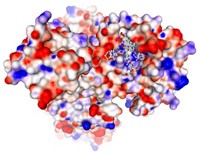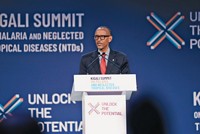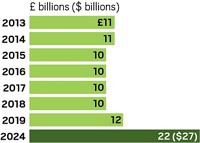Advertisement
Grab your lab coat. Let's get started
Welcome!
Welcome!
Create an account below to get 6 C&EN articles per month, receive newsletters and more - all free.
It seems this is your first time logging in online. Please enter the following information to continue.
As an ACS member you automatically get access to this site. All we need is few more details to create your reading experience.
Not you? Sign in with a different account.
Not you? Sign in with a different account.
ERROR 1
ERROR 1
ERROR 2
ERROR 2
ERROR 2
ERROR 2
ERROR 2
Password and Confirm password must match.
If you have an ACS member number, please enter it here so we can link this account to your membership. (optional)
ERROR 2
ACS values your privacy. By submitting your information, you are gaining access to C&EN and subscribing to our weekly newsletter. We use the information you provide to make your reading experience better, and we will never sell your data to third party members.
Policy
Science Down Under
by Bibiana Campos Seijo
March 23, 2015
| A version of this story appeared in
Volume 93, Issue 12
We don’t often hear about Australian science. One could think that this is an instance of “no news is good news,” but I’m afraid that this is not the case. Scientists in that country are concerned about the lack of investment, and four of the nation’s science Nobel Prize winners recently wrote to the Australian Financial Review about their concerns for Australian science and the country’s ability to compete as an innovation economy.
Elizabeth Blackburn (who shared the Nobel Prize in Physiology or Medicine in 2009) doesn’t mince words: “How could Australia not think of investing heavily in science? This is just insanity. … Australia needs to invest in science. It’s a bigger picture than politics. Prime ministers come and go. National policies can be developed in a much less politicized way and be much more forward looking, whoever the prime minister happens to be.”
It doesn’t take much digging to find additional worrying reports in the pages of other dailies such as The Age or the Sydney Morning Herald among others.
All fingers point at the current government, led by Prime Minister Tony Abbott, who assumed office in September 2013. His government got off on the wrong foot with Australia’s scientific sector when it abolished the science ministry and moved its portfolio to the industry ministry.
In the almost 18 months that this administration has been in place, its approach to funding science hasn’t been good, with budget cuts across a swath of scientific agencies: For example—all amounts in Australian dollars—$7.8 million was cut from the Australian Institute of Marine Science, $28 million from the Australian Nuclear Science & Technology Organisation, $36 million from Geoscience Australia, $75 million from the Australian Research Council, and $80 million from the Cooperative Research Centres program. There were also cuts of $120 million from the Defence Science & Technology Organisation and more than $115 million from the budget of the Commonwealth Scientific & Industrial Research Organisation, or CSIRO, the nation’s premier national science agency, resulting in hundreds of job losses and the closure of several research facilities.
However, there are signs that suggest the problems may have started before Abbott took office. One measure of a country’s innovation is the number of international patents it holds. Australia, along with the U.K. and New Zealand, has seen its number of international patents decline over the past decade. So although many blame Abbott, the problem may well precede him.
Australian science is in the news in a positive way as well. I recently heard about an initiative that I believe many of you may be interested in. It is called the Community for Open Antimicrobial Drug Discovery, or CO-ADD. This nonprofit antibiotic discovery initiative is based at the University of Queensland in Brisbane. With funding from the Wellcome Trust in the U.K., CO-ADD folks are inviting academic researchers from around the world to fight back against superbugs by sending in compounds they have “lying around on their shelves” to be screened for antimicrobial properties. The CO-ADD scientists are seeking novel chemical diversity; they realize that most of these compounds will not have been designed for antimicrobial activity.
CO-ADD scientists are doing the screening for free, and the initiative will foot the cost of shipping compounds to Australia. CO-ADD has no claims to intellectual property, and the researcher who sends in a compound keeps complete control of it. CO-ADD asks that the structure and compound be added to an open access database 18 months after CO-ADD completes its screening, giving the researcher enough time to publish or patent positive hits.
They are already screening compounds from Europe, India, and New Zealand, and in the process they are building a community to fight back against this global challenge.
It sounds like a good public initiative; you can read more at co-add.org.
Views expressed on this page are those of the author and not necessarily those of ACS.





Join the conversation
Contact the reporter
Submit a Letter to the Editor for publication
Engage with us on Twitter